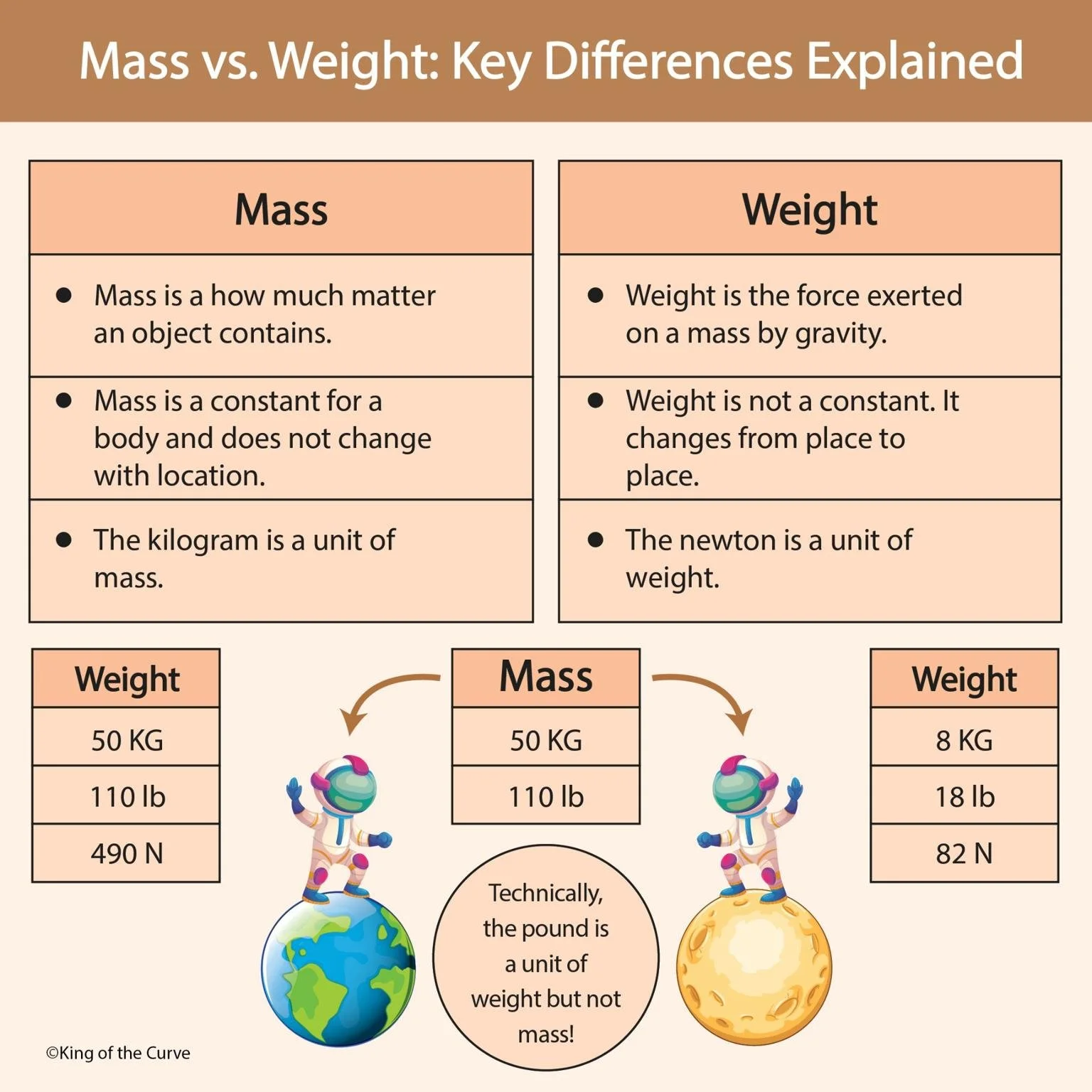🪐 Understanding the Difference Between Mass and Weight
When we talk about objects and their physical properties, the terms mass and weight are often used interchangeably — but in physics, they represent two very different things. Understanding this distinction is essential in grasping how gravity and matter interact.
⚖️ Mass: The Measure of Matter
Mass is a measure of how much matter an object contains. It’s a constant property that doesn’t change, no matter where the object is located — whether on Earth, the Moon, or floating in space. The unit of mass in the International System (SI) is the kilogram (kg).
In simple terms, mass tells us how much “stuff” makes up an object. For example, a rock that has a mass of 10 kg on Earth will still have a mass of 10 kg on Mars or in space — even though it might weigh differently due to gravitational differences.
🌍 Weight: The Force of Gravity on Mass
Weight, on the other hand, is the force exerted on a mass due to gravity. This means that weight depends on both the object’s mass and the gravitational pull acting on it. It can be calculated using the formula:
Weight = Mass × Gravitational Acceleration (W = mg)
Because gravity varies from planet to planet, an object’s weight changes with location. The unit of weight in the SI system is the newton (N).
📊 Comparison Between Mass and Weight
| Aspect | Mass | Weight |
|---|---|---|
| Definition | Amount of matter in an object | Force exerted by gravity on that mass |
| Nature | Constant everywhere | Changes with location |
| SI Unit | Kilogram (kg) | Newton (N) |
| Instrument Used | Beam balance | Spring balance |
🌗 Mass vs Weight on Earth and Moon
To visualize the difference, imagine an astronaut with a mass of 50 kg. On Earth, their weight is about 490 N, while on the Moon — where gravity is weaker — their weight drops to around 82 N. However, their mass remains the same: 50 kg.
This example highlights why astronauts can jump higher on the Moon even though they haven’t lost any mass — they simply weigh less due to reduced gravitational pull.
🔭 Why the Distinction Matters
Understanding mass and weight isn’t just important in physics class — it has real-world applications. Engineers, astronauts, and scientists rely on this distinction when designing spacecraft, calibrating instruments, or conducting experiments in different gravitational environments. Even in everyday life, knowing the difference helps in understanding scales, nutrition labels, and scientific measurements accurately.
🚀 Call to Action: Keep Learning with King of the Curve!
Physics helps us understand how the universe works — from the smallest atom to the largest galaxy. Want to master more concepts like mass vs weight, momentum, and energy? 🌌
👉 Explore more illustrated explanations and interactive quizzes at King of the Curve to sharpen your science knowledge today!
Frequently Asked Questions (FAQs)
-
Aim for 4-6 focused hours, ensuring you incorporate breaks to avoid burnout.
-
Practice mindfulness techniques, take practice exams under realistic conditions, and maintain a balanced lifestyle.
-
Set short-term goals, seek support from mentors, and reward yourself for small achievements.
-
Regular exercise improves focus, reduces stress, and enhances overall mental clarity.
-
KOTC offers personalized learning tools, gamification features, and adaptive question banks to help students stay on track without burnout.


